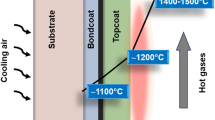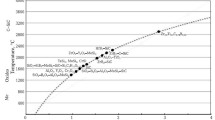Abstract
The current generation of aircraft coatings had its basis in the polymer technologies of the 1970s and the use of chromate-based metal pretreatments and primers. There have been some incremental improvements in the epoxy and polyamide oligomers used in the primers as well as the isocyanates and flexible polyols used in topcoats, plus increases in the volume solids of the coatings to continue minimally meeting environmental requirements, but no truly new technologies have been developed and applied to aircraft coatings since that time. However, because of increasing economic and environmental pressures, this situation will soon change. Also, the U.S. Air Force is seeking a coating system that will have an ultimate lifetime of 30 years for maintenance cost control and fleet sustainability. The first change in the present coatings system will be in the pretreatments plus primers that currently constitute the metal protection system for the high strength Al alloys used for aircraft. For military aircraft, these alloys will continue to be Al 2024 T-3 and Al 7075-T6, heat-treated metals that have phase-separated regions rich in reactive metals such as Cu, Mg, and Zn. There are several new technologies now under consideration for such metal protection including conductive polymers as primers without Cr-based metal pretreatments, sol-gel based pretreatments and primers, plasma polymer metal pretreatments, and organo-modified aluminum oxide particles. Each of these technologies has shown some promise for Cr replacement, but each presently has a weakness that needs to be corrected for immediate usage. For the topcoat system, fluorinated polyols and improved use of UV-absorbers and light stabilizers will probably be the first changes implemented, with ceramer and other new crosslinking systems the most likely next polymer matrix candidates. The target for the entire coatings system is to have drastically improved wet-adhesion due to a covalently bonded system that has a gradient in composition that goes continuously from metal to metal oxide to mixed metal oxide/organic polymer to high-performance UV-stable organic polymer. The materials cost for such a system may be quite high, but the maintenance cost savings will much more than offset these costs.
Similar content being viewed by others
References
Chattopadhyay, A.K. and Zentner, M.R., “Aerospace and Aircraft Coatings,”Federation Series on Coatings Technology, Federation of Societies for Coatings Technology, Philadelphia, PA, 1990.
Schmitt, G.F., “It’s Not Your Father’s Air Force,”SAMPE J., 34, 33–36 (1996).
Hegedus, C.R., Spadafora, S.J., Pulley, D.F., Eng, A.T., and Hirst, D.J., “Aerospace and Aircraft Coatings,” inPaint and Coatings Testing Manual, Ch. 58, p. 683–695, Koleske, J.V. (Ed.), 14th Edition of Gardner-Sward Handbook, ASTM, Philadelphia, PA, 1995.
Cederquist, S.C., “Improving Aging Airplane Safety,”Mat. Perform., 39, 21–25 (2000).
Taken from a briefing presented by Dr. D. Peeler of USAF Research Laboratory, Coating Technology Integration Office, WPAFB, OH, 1999, AERMAT1.
Bierwagen, G.P., “The Science of Durability of Organic Coatings—A Foreword,”Prog. Org. Coat., 15, 179–185 (1987).
Bierwagen, G.P., “Increased Durability of Aircraft Coatings by the Use of Pigmented Polymer Beads,”Proc. XVth FATIPEC Congress, V.III, p. 100–125, (Amsterdam, June 1980); Bierwagen, G.P., “Increased Durability of Aircraft Coatings by the Use of Pigmented Polymer Beads,”Journal of Coatings Technology,54, No. 695, 19 (1982).
Johnson, B.W. and McIntyre, R., “Analysis of Test Methods for UV Durability Predictions of Polymer Coatings,”Prog. Org. Coat., 27, 95–106 (1996);
Wypych, G.,Handbook of Material Weathering, ChemTec Publishing, Ontario, Canada, 1995;
Hicks, L.S. and Crewdson, M.J., “Natural Weathering,” inPaint and Coatings Testing Manual, Ch. 53, pp. 619–642, Koleske, J.V. (Ed.), 14th Edition of Gardner-Sward Handbook, ASTM, Philadelphia, PA, 1995;
Sherbondy, V.D., “Accelerated Weathering,” inPaint and Coatings Testing Manual, Ch. 53, pp. 643–653, Koleske, J.V. (Ed.), 14th Edition of Gardner-Sward Handbook, ASTM, Philadelphia, PA, 1995.
Valet, A.,Light Stabilizers for Paints, Vincentz Verlag, Hannover, Germany, 1997.
Gerlock, J.L., Bauer, D.R., Briggs, L.M., and Dickie, R.A., “A Rapid Method of Predicting Coating Durability Using Electron Spin Resonance,”Journal of Coatings Technology,57, No. 722, 37 (1985).
Nichols, M., Gerlock, J.H.L., Smith, C.A., and Darr, C.A., “The Effects of Weathering on the Mechanical Properties of Automotive Paint Systems,”Prog. Org. Coat., in press.
Murray, J.N., “Electrochemical Test Methods for Evaluating Organic Coatings on Metals: An Update. Part II: Single Test Parameter Measurements,”Prog. Org. Coat., 31, 255–264 (1997), and references therein.
Bierwagen, G.P., Tallman, D.E., Touzain, S., Smith, A., Twite, R., Balbyshev, V., and Pae, Y., “Electrochemical Noise Methods Applied to the Study of Organic Coatings and Pretreatment,”Paper 380, Corrosion 98, Reviewed paper for the 1998 Annual Meeting of the Nat. Assoc. Corrosion Eng. (NACE), NACE Int., Houston, TX, March 1998.
Isaacs, H.S., Davenport, A.J., and Shipley, A.,J. Electrochem. Soc., 138, 390 (1991).
Wittmann, M.W. and Taylor, S.R.,Advances in Corrosion Protection by Organic Coatings II, Scantlebury, D. and Kendig, M. (Eds.), PV 95-13, p. 158, The Electrochemical Society Proceedings Series, Pennington, NJ, 1995.
Leggat, R.B. and Taylor, S.R.,Corrosion, 55, 984 (1999).
He, J., Johnston Gelling, V., Tallman, D.E., and Bierwagen, G.P., “A Scanning Vibrating Electrode Study of Chromated-Epoxy Primer on Steel and Aluminum,”J. Electrochem. Soc., 147, 3661–3666 (2000).
Stratmann, M. and Streckel, H.,Corros. Sci. 30, 681 (1990).
Fürbeth, W. and Stratmann, M., “Scanning Kelvinprobe Investigations on the Delamination of Polymeric Coatings from Metallic Surfaces,”Prog. Org. Coat., 39, 23–29 (2000).
Davis, G.D., Dacres, C.M., and Krebs, L.A., “In-Situ Corrosion Sensor for Corrosion Testing and Screening,”Mat. Perform., 39, 46–50 (2000).
Simpson, T.C., “Electrochemical Methods to Monitor Degradation of Organic and Metallic Coatings.”Proc. 12th International Corrosion Congress, Vol. 1, p.157–170, Houston, TX, 1993.
Bierwagen, G., Tallman, D., and Wang, X., unpublished results, North Dakota State University, Fargo, ND.
Martin, J. et al., Symposium on Service Life Prediction Methodologies and Metrologies, Monterey, CA, November 14–19, 1999.
Bierwagen, G.P., Twite, R., Chen, G., and Tallman, D.E., “AFM, SEM, and Electrochemical Characterization of Al Alloys Conversion Coatings, and Primers Used for Aircraft,”Prog. Org. Coat., 32, 25–30 (1997).
Urban, M.W., et al,Langmuir, in press.
Vecellio, M., “Opportunities and Developments in Fluoropolymeric Coatings,” paper given at 1999 International Conference on Organic Coatings, Athens, Greece, July 5–9, 1999, to be published inProg. Org. Coat.
Ni, H., Aserud, D.J., Simonsick, W.J., Jr., and Soucek, M.D., “Preparation and Characteristics of Alkoxysilane Functionalized Isocyanurates,”Polymer, 41, 57 (2000).
Bierwagen, G.P., Fishman, R.S., Storsved, T., and Johnson, J., “Recent Studies of Particle Packing in Organic Coatings,”Prog. Org. Coat., 35, 1–10 (1999).
Bierwagen, G.P., Nanna, M., and Johnson, J., unpublished results, NDSU, Fargo, ND.
Tallman, D.E., Pae, Y., and Bierwagen, G.P., “Conducting Polymers and Corrosion: II Polyaniline on Aluminum Alloys,”Corrosion, 56, 401–410 (2000).
Twite, R.L. and Bierwagen, G.P., “Review of Alternatives to Chromate for Corrosion Protection of Aluminum Aerospace Alloys,”Prog. Org. Coat., 33, 91–100 (1998).
Iievbare, G.O., Scully, J.R., Yuan, J., and Kelly, R.G., “Inhibition of Pitting Corrosion on Aluminum Alloy 2024-T3: Effect of Soluble Chromate Additions vs. Chromate Conversion Coating,”Corrosion, 56, 227–242 (2000).
Osborne, J., et al., Unpublished results, Boeing Defense and Spare Group, Advanced Corrosion Resistant Aircraft Coatings, DARPA Contract # F33615-96-C-5708.
Work done for DARPA, led by University Missouri-Columbia, Prof. H. Yasuda, PI, subcontractors were the University Missouri-Kansas City, Boeing-St. Louis and North Dakota State University.
Yasuda, H.K., Wang Tinghao, F., Cho, D.L., Lin, T.J., and Antonelli, J.A., “Corrosion Protection of Cold-Rolled Steel by Low Temperature Plasma in Interface Engineering,”Prog. Org. Coat., 30, 31–33 (1997).
Lu, W.K., Elsenbaumer, R.L., and Wessling, B., “Corrosion Protection of Mild Steel by Coatings Containing Polyaniline,”Synth. Met., 71, p. 2,163 (1995).
Tallman, D.E., Pae, Y., and Bierwagen, G.P., “Conducting Polymers and Corrosion: Poly(aniline) on Steel,”Corrosion, 55, 779 (1999).
Racicot, R.J., Yang, S.C., and Brown, R.,Corrosion, 531, 1 (1997).
Tallman, D.E., Pae, Y., and Bierwagen, G.P., “Conducting Polymers and Corrosion 2: Polyaniline on Aluminum Alloys,”Corrosion, 56, 401–410 (2000).
Author information
Authors and Affiliations
Additional information
Department of Polymers & Coatings, Fargo, ND 58105.
Rights and permissions
About this article
Cite this article
Bierwagen, G. Next generation of aircraft coatings systems. Journal of Coatings Technology 73, 45–52 (2001). https://doi.org/10.1007/BF02730030
Issue Date:
DOI: https://doi.org/10.1007/BF02730030




